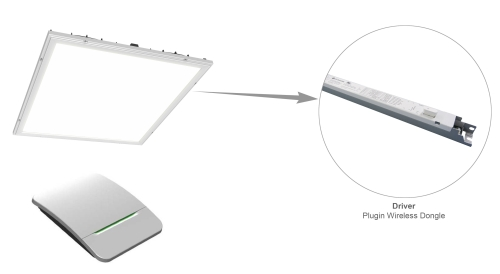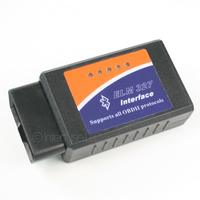Update the device driver. In the search box on the taskbar, enter device manager, then select Device Manager. Select a category to see names of devices, then right-click (or press and hold) the one you’d like to update. Select Search automatically for updated driver software. Select Update Driver. In the Configuration Manager console, go to the Software Library workspace. Expand Operating Systems, and then select the Drivers node. Select the device drivers that you want to add to a driver package. On the Home tab of the ribbon, in the Driver group, select Edit, and then choose Driver Packages. You have to download, install and then launch the Bit Driver Updater tool on your Windows system. Then, use the Scan feature to identify the device drivers that need fixing like the Wifi drivers, other network drivers, etc.
Olivetti others driver download for windows. A network driver is a software program that controls a device used to connect a computer to a network.
DNS is a fully-supported technology platform connecting certified drivers with local and national businesses to support their operations and business objectives. In cities where DNS operates, businesses are granted access to the full DNS Network – showing driver location, current job status, and more.
Network drivers control the interface between a computer and a given network. It is familiar with the protocol being used by the computer network, creating a unique identification for the computer that can be used in the system. As information is exchanged between the computer and the network, the network driver converts it into usable formats. The network driver also provides feedback to the user about the status of the network so that people know at all times when they are connected, at what speed, and if there are any problems with the network. Mapletronic laptops & desktops driver download for windows.
Computers can have one or more networking devices, including wireless cards or wired ethernet cards, for example. Without network drivers, these devices cannot work properly and may have trouble accessing the network or executing commands from the user.
What Does a Network Driver Do?
Many people wonder what the primary function of network drivers is. In general terms, any device driver acts as an interface between the 'abstract' view of the hardware that the operating system has, and the 'physical' chipset that actually exists on the board. This abstraction layer allows different hardware from different vendors to be used across many different operating systems. It also allows 'software' devices (such as a network loopback device) to be implemented that don't have any underlying hardware to control.
Each network chip will have different I/O registers, memory-mapped buffers, ways of detecting interface speeds, and all sorts of other fundamental technical differences. The job of the driver is simply to abstract those differences away so that the O/S has a common API for moving packets from the higher network layers down to the hardware (and vice versa).
Did You Know?

- A network driver is a piece of software which activates the transmission and receipt of data over a network. It provides the data link protocol (Ethernet, Token Ring, etc.) which controls the specific brand of network adapter installed in the computer.
- Network adaptors are different from drivers, being hardware components that connect computers to networks via integrated chipset, system on a chip (SoC) or other suitable connections.
- Most modern devices require drivers to function properly, including printers, video adaptors, digital cameras and computer storage devices such as CD-ROM and floppy disk buses.
- Device drivers—particularly on modern Microsoft Windows platforms—can run in kernel-mode (Ring 0 on x86 CPUs) or in user-mode (Ring 3 on x86 CPUs), the latter of which can help improve stability.
- Network drivers play a key role in network management.
How Do You Find Your Current Network Driver Version?
Identifying your current network adaptor driver version on Windows 10 is a quick and easy process. From the Device Manager, open the dropdown list of network adapters and right click on the device you are looking to check. Click Properties, then click the Driver tab to see the driver version. You may also see an option on this screen to update the device driver, which is a painless way of ensuring that your device drivers are up to date at all times.
When Should You Update Your Network Drivers?
It is advisable to update network drivers when new versions of the software are released. These new versions can address security and device vulnerabilities that might otherwise become a problem for computer users, as well as expand functionality as much as is allowed by the device. Users who are unsure about whether or not they are using the latest driver can usually explore the properties on the network device to see which version of the driver software is in use and compare this information with data available on the manufacturer's website.
How Do You Install a Network Driver?
While many people may feel intimidated by the idea of installing network drivers on their own, the process is generally the same for all network devices and should not be confused as being difficult. Once you know how to update drivers, you will be able to better troubleshoot potential issues that may come down the road.
Here’s what you need to do:
- Locate and download the proper network adapter driver software for the device you are trying to get working properly. More often than not, this can be found on the manufacturer’s website.
- Find the driver installation file (likely in your ‘Downloads’ folder) and double-click to open it. In most cases, an installation wizard will run, and you’ll only have to follow the on-screen instructions to complete the installation.
- Next, click Start > Control Panel > System and Security > Device Manager.
- Click the “+” symbol next to “Network Adapters.” If the installation has been performed successfully, you will see your network card listed here with an exclamation mark next to it.
- From here, you can also manually update your device drivers via a zip file by clicking “Update Driver Software” and running the driver updater.
Drivers In Networking
Testing and Troubleshooting Your Network Driver
It’s not uncommon for devices to be in conflict with one another, resulting in poor network access or stability. To test and troubleshoot your network driver, simply go to Control Panel > System and Maintenance > System > Device Manager > Network Adapters. From here, you’ll have a list of the drivers for your network adaptors as well as their properties, which you can right-click to view. Ensure that the correct drivers are enabled and that there are no conflicts, which can also help you to identify whether or not you may have a hardware problem on your hands, ie: a bad network card.

Network drivers play a crucial role in today’s increasingly interconnected digital world. By keeping your drivers updated on a regular basis, you can ensure seamless connectivity and a more enjoyable experience browsing the web.
The Network Driver Interface Specification (NDIS) is an application programming interface (API) for network interface controllers (NICs).
Specification[edit]
It was jointly developed by Microsoft and 3Com Corporation and is mostly used in Microsoft Windows. However, the open-sourceNDISwrapper and Project Evildriver wrapper projects allow many NDIS-compliant NICs to be used with Linux, FreeBSD and NetBSD. magnussoft ZETA, a derivative of BeOS, supports a number of NDIS drivers.
The NDIS forms the logical link control (LLC) sublayer, which is the upper sublayer of the OSIdata link layer (layer 2). Therefore, the NDIS acts as the interface between the media access control (MAC) sublayer, which is the lower sublayer of the data link layer, and the network layer (layer 3).
The NDIS is a library of functions often referred to as a 'wrapper' that hides the underlying complexity of the NIC hardware and serves as a standard interface for level 3 network protocol drivers and hardware level MAC drivers.
The NDIS versions supported by various Windows versions are as follows:[1]
Drivers On Networks Tv
- NDIS 2.0: MS-DOS, Windows for Workgroups 3.1, OS/2
- NDIS 3.0: Windows for Workgroups 3.11
- NDIS 3.1: Windows 95
- NDIS 4.0: Windows 95 OSR2, NT 4.0, Windows CE 3.0
- NDIS 4.1: Windows 98
- NDIS 5.0: Windows 98 SE, Me, 2000
- NDIS 5.1: Windows XP, Server 2003, Windows CE 4.x, 5.0, 6.0[2]
- NDIS 5.2: Windows Server 2003 SP2
- NDIS 6.0: Windows Vista
- NDIS 6.1: Windows Vista SP1, Server 2008, Windows Embedded Compact 7,[3] Windows Embedded Compact 2013
- NDIS 6.20: Windows 7, Server 2008 R2
- NDIS 6.30: Windows 8, Windows Server 2012
- NDIS 6.40: Windows 8.1, Windows Server 2012 R2
- NDIS 6.50: Windows 10, version 1507[4]
- NDIS 6.60: Windows 10, version 1607 and Windows Server 2016[4]
- NDIS 6.70: Windows 10, version 1703[4]
- NDIS 6.80: Windows 10, version 1709[4]
- NDIS 6.81: Windows 10, version 1803[4]
- NDIS 6.82: Windows 10, version 1809 and Windows Server 2019[4]
- NDIS 6.83: Windows 10, version 1903[4]
Drivers On Networks Provider

The traffic accepted by the NIC is controlled by an NDIS miniport Driver while various protocols, such as TCP/IP, are implemented by NDIS Protocol Drivers. A single miniport may be associated with one or more protocols. This means that traffic coming into the miniport may be received in parallel by several protocol drivers. For example, Winpcap adds a second protocol driver on the selected miniport in order to capture incoming packets. Furthermore, it is possible to simulate several virtual NICs by implementing virtual miniport drivers that send and receive traffic from a single physical NIC. One example of virtual miniport driver usage is to add virtual NICs, each with a different Virtual LAN. Because implementations cannot assume that other drivers received the same buffers, one must treat the incoming buffers as read only and a driver that changes the packet content must allocate its own buffers.
A miniport is a type of hardware driver, part of the Windows Driver Model. These are USB, Audio, SCSI and network card adapters. They should usually be source and binary compatible between Windows 98 and Windows 2000 and are hardware specific but control access to the hardware through a specific bus class driver.[5]
On Networks Wireless Drivers
Another driver type is NDIS Intermediate Driver. Intermediate drivers sit in-between the MAC and IP layers and can control all traffic being accepted by the NIC. In practice, intermediate drivers implement both miniport and protocol interfaces. The miniport driver and protocol driver actually communicate with the corresponding miniport and protocol interfaces that reside in the intermediate driver. This design enables adding several chained intermediate drivers between the miniport and protocol drivers. Therefore, driver vendors cannot assume that the interface that they send traffic to is implemented by the last driver in the chain. In order to write applications using NDIS, one can use samples that accompany Microsoft's Windows Driver Kit (WDK). The 'PassThru' sample is a good starting point for intermediate drivers as it implements all the necessary details required in this driver type, but just passes the traffic through to the next driver in the chain.
See also[edit]
Drivers On Networks Network
- Open. docs.microsoft.com. Retrieved 2020-03-24.
- ^Network Drivers (Windows Embedded CE 6.0)
- ^What's New (Windows Embedded Compact 7)
- ^ abcdefg'Overview of NDIS versions'. Microsoft. Retrieved 2019-06-28.
- ^'Introduction to the Windows Driver Foundation'. Microsoft Developer Network. 2006-10-13. Retrieved 2010-12-06.
The device class-specific driver models are typically structured as a port driver written by Microsoft paired with a miniport driver written by an independent hardware vendor. The port driver does much of the work required for the device class, and the miniport driver supports device-specific characteristics.
Drivers On Networks Wireless
External links[edit]

